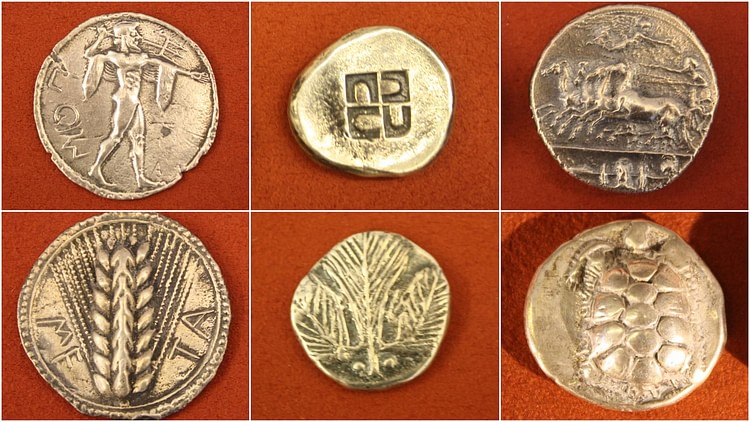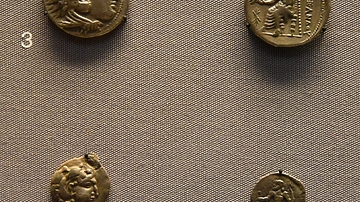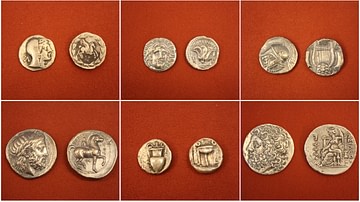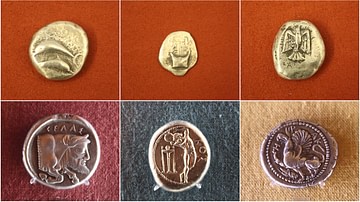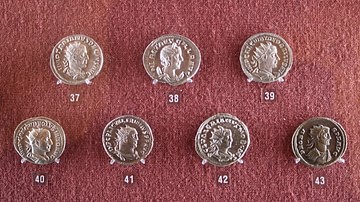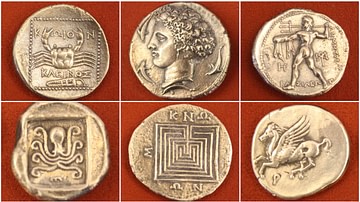Illustration
Top row (L to R):
Poseidonia (520 BCE) - Silver stater, Poseidon with trident.
Corinth (525-500 BCE) - Silver stater, incuse square of swastika design.
Syracuse (c. 400 BCE) - Silver decadrachm, quadriga with Nike crowning a charioteer.
Bottom row (L to R):
Metapontum (520 BCE) - Silver stater, ear of wheat.
Selinus (c. 530 BCE) - Silver didrachm, celery leaf.
Aegina (4th century BCE) - Silver stater, tortoise
(Alpha Bank Numismatics Museum, Kerkyra, Corfu)
About the Author
Cite This Work
APA Style
Cartwright, M. (2016, July 14). Greek Silver Coins. World History Encyclopedia. Retrieved from https://www.worldhistory.org/image/5308/greek-silver-coins/
Chicago Style
Cartwright, Mark. "Greek Silver Coins." World History Encyclopedia. Last modified July 14, 2016. https://www.worldhistory.org/image/5308/greek-silver-coins/.
MLA Style
Cartwright, Mark. "Greek Silver Coins." World History Encyclopedia. World History Encyclopedia, 14 Jul 2016, https://www.worldhistory.org/image/5308/greek-silver-coins/. Web. 05 Jul 2025.
